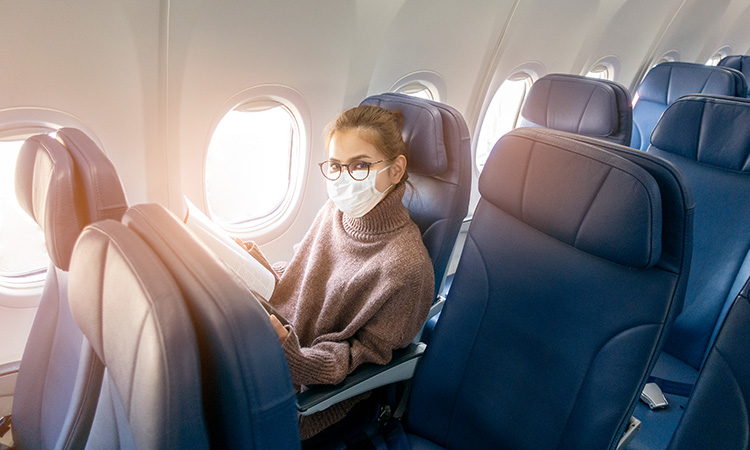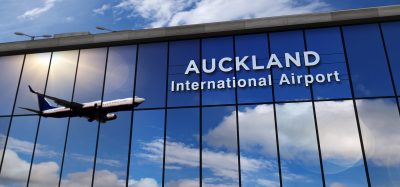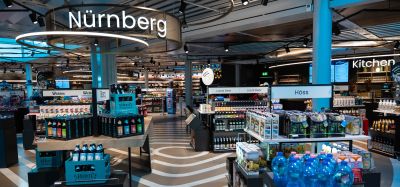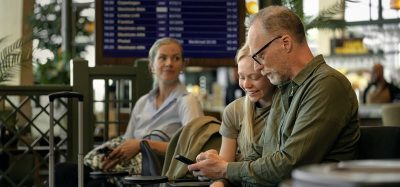IATA highlights evidence of low incidence of inflight COVID-19 transmission
- Like
- Digg
- Del
- Tumblr
- VKontakte
- Buffer
- Love This
- Odnoklassniki
- Meneame
- Blogger
- Amazon
- Yahoo Mail
- Gmail
- AOL
- Newsvine
- HackerNews
- Evernote
- MySpace
- Mail.ru
- Viadeo
- Line
- Comments
- Yummly
- SMS
- Viber
- Telegram
- Subscribe
- Skype
- Facebook Messenger
- Kakao
- LiveJournal
- Yammer
- Edgar
- Fintel
- Mix
- Instapaper
- Copy Link
Posted: 16 October 2020 | International Airport Review | No comments yet
IATA has outlined that, currently, only 44 cases of COVID-19 have been thought to be associated with a flight journey, representing one case for every 27 million travellers.


The International Air Transport Association (IATA) has demonstrated the low incidence of inflight COVID-19 transmission with an updated tally of published cases. Since the start of 2020, there have been 44 cases of COVID-19 reported in which transmission is thought to have been associated with a flight journey (inclusive of confirmed, probable and potential cases). Over the same period, some 1.2 billion passengers have travelled.
IATA’s Medical Advisor, Dr. David Powell, said: “The risk of a passenger contracting COVID-19 while onboard appears very low. With only 44 identified potential cases of flight-related transmission among 1.2 billion travellers, that’s one case for every 27 million travellers. We recognise that this may be an underestimate, but, even if 90 per cent of the cases were un-reported, it would be one case for every 2.7 million travellers. We think that these figures are extremely reassuring. Furthermore, the vast majority of published cases occurred before the wearing of face coverings inflight became widespread.”
New insight into why the numbers are so low has come from the joint publication by Airbus, Boeing and Embraer of separate computational fluid dynamics (CFD) research conducted by each manufacturer in their aircraft. While methodologies differed slightly, each detailed simulation confirmed that aircraft airflow systems do control the movement of particles in the cabin, limiting the spread of viruses.
Data from the simulations yielded similar results:
- Aircraft airflow systems, High Efficiency Particulate Air (HEPA) filters, the natural barrier of the seatback, the downward flow of air and high rates of air exchange efficiently reduce the risk of disease transmission on board in normal times
- The addition of mask wearing amid pandemic concerns adds a further and significant extra layer of protection, which makes being seated in close proximity in an aircraft cabin safer than most other indoor environments.
Data Collection
IATA’s data collection, and the results of the separate simulations, align with the low numbers reported in a recently published peer-reviewed study by Freedman and Wilder-Smith in the Journal of Travel Medicine.
Although there is no way to establish an exact tally of possible flight-associated cases, IATA’s outreach to airlines and public health authorities, combined with a thorough review of available literature, has not yielded any indication that onboard transmission is in any way common or widespread. Furthermore, the Freedman/Wilder-Smith study points to the efficacy of mask wearing in further reducing risk.
Layered approach of preventive measures
Mask wearing on board was recommended by IATA in June 2020 and is a common requirement on most airlines since the subsequent publication and implementation of the Takeoff Guidance by the International Civil Aviation Organization (ICAO). This guidance adds multiple layers of protection on top of the airflow systems which already ensure a safe cabin environment with very low risks of inflight transmission of disease.
“ICAO’s comprehensive guidance for safe air travel amid the COVID-19 crisis relies on multiple layers of protection, which involve the airports as well as the aircraft. Mask wearing is one of the most visible. But managed queuing, contactless processing, reduced movement in the cabin and simplified onboard services are among the multiple measures that the aviation industry is taking to keep flying safe. This is on top of the fact that airflow systems are designed to avoid the spread of disease, with high air flow and air exchange rates and highly effective filtration of any recycled air,” said Powell.
Aircraft design characteristics add a further layer of protection, contributing to the low incidence of inflight transmission. These include:
- Limited face-to-face interactions, as passengers face forward and move about very little
- The effect of the seat-back acting as a physical barrier to air movement from one row to another
- The minimisation of forward-aft flow of air, with a segmented flow design which is directed generally downward from ceiling to floor
- The high rate of fresh air coming into the cabin. Air is exchanged 20 to 30 times per hour on board most aircraft, which compares very favorably with the average office space (average two to three times per hour) or schools (average 10 to 15 times per hour)
- The use of HEPA filters, which have more than 99.9 per cent bacteria/virus removal efficiency rates, ensuring that the air supply entering the cabin is not a pathway for introducing microbes.
Safety is always the top priority
This research effort demonstrates the cooperation and dedication to safety of all involved in air transport and provides evidence that cabin air is safe.
Aviation earns its reputation on safety with each and every flight. This is not different for flying in the time of COVID-19. A recent IATA study found that 86 per cent of recent travellers felt that the industry’s COVID-19 measures were keeping them safe and were well-implemented.
IATA’s Director General and CEO, Alexandre de Juniac, said: “There is no single silver-bullet measure that will enable us to live and travel safely in the age of COVID-19. But the combination of measures that are being put in place is reassuring travellers the world over that COVID-19 has not defeated their freedom to fly. Nothing is completely risk-free. But, with just 44 published cases of potential inflight COVID-19 transmission among 1.2 billion travellers, the risk of contracting the virus on board appears to be in the same category as being struck by lightning.”
“The detailed computational fluid dynamics research of the aircraft manufacturers demonstrates that combining the aircraft’s existing design features with mask wearing creates a low-risk environment for COVID-19 transmission. As always, airlines, manufacturers and every entity involved in aviation will be guided by science and global best practices to keep flying safe for passengers and crew,” said de Juniac.
Related topics
Aircraft, Airport crisis management, COVID-19, Passenger experience and seamless travel, Safety
Related organisations
Airbus, Boeing, Embraer, Freedman and Wilder-Smith, International Air Transport Association (IATA), International Civil Aviation Organization (ICAO)


















